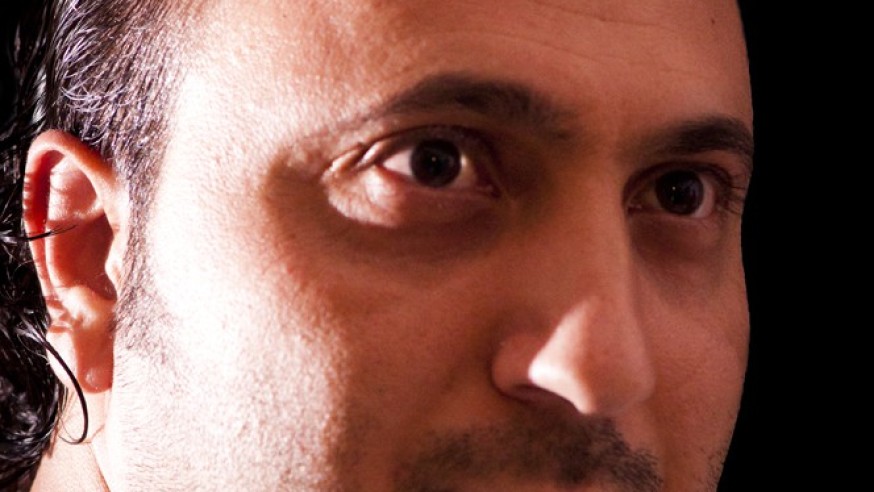It is impossible to tell the story of the Syrian uprising without dedicating a glowing chapter to the town of Kafranbel, a small town in Idlib’s southern countryside. Known as the “revolution’s conscience” or its “musical note”, the town’s banners and how they were signed came to reflect the revolution’s own course: from “Kafranbel, the rebelling”, to “Kafranbel, the occupied”, and finally “Kafranbel, the liberated.”
April 2011 was the point when the town of 30,000 inhabitants turned its back on the ancien régime and participated in its first demonstrations. Since then, the calmness gave way to revolutionary fervent and daily activities. Its banners announced their wit thusly: “Open your eyes: it reads peaceful, not ‘salafist’” (a clever play on the words “salafiyya” and “silmiyya” - Arabic for ”salafist” and “peaceful” respectively- which are similar in writing).
At a time when the regime was pushing and hoping for more militarization in the revolution, the town chose to resist with simpler, yet even more piercing means: a pen, caricatures and banners that reflect their views. The banners of Kafranbel, in their profound civil awareness and engagement and their witty simplicity, soon became the most popular of Syria’s revolution to the world. This can be partly explained by the town’s highly educated citizens where 65% of its inhabitants older than 23 hold at least a university degree, while 15% have postgraduate degrees.
Involvement in the revolution
Since its first demonstration in April 2011, Kafranbel has turned the weekly Friday protests into a widely anticipated event inside and outside the town. Every friday, supporters of the Syrian uprising look to Kafranbel to see what their banners have in store for them that week. Those banners, which were held in the demonstrations, and widely distributed on social networking sites, soon became an international sensation after being picked up by international news agencies.
The town’s painter, Ahmad Jalal, who was behind many of the signs, relates the story of the “Kafranbel banner” in an interview with Syria Untold: “When we had our first demonstration, state-owned television channels responded by saying that it never happened. So I had the idea of writing down the date and location on the banners in the demonstrations, and that’s how our first banner was born: Kafranbel, the citadel of revolutionaries, April 29, 2011.”
The process of producing these banners soon became a communal one according to Jalal: “We all cooperate in coming up with ideas. Every activist suggests an idea and we work together to develop it, and then we agree on our final version. Our ideas come from our reality, from what we see and hear. We have a specialized calligrapher who writes the banner, and a translator who translates them to English.”
The “Kafranbel banner”
The secret behind the phenomenon of the Kafranbel banner lies in its nail biting critique, mostly through dark humour, and in its informed content which reflects the awareness of the town’s citizens. The banners also reflect an unprecedented level of interaction with world events relating to Syria. When the US ambassador was attacked by security forces during a visit to a rebelling town, the town raised a banner that said: “It seems we are asking protection from those who can’t protect their own ambassadors.” And in response to the Chinese veto in the UN security council the banner read: “Kafranbel wants to liberate Tibet.” The town’s version of op-ed is also unique in the level of self-reflection and critique of the uprising’s own supporters or political representation: “You brought us halfway down the well, and then you cut the rope.”
But the town’s most tragic and painful banner remains its reflection on a world that seemed to abandon Syrians to their bloody fate: “Down with the regime, down with the opposition, down with the Arab and Islamic nation all together. Down with the security council, down with the world. Down with everything!”
From a movement to a symbol
Media coverage of the town came fast and thick and soon there were special features on major international and Arab news agencies including: Al-Jazeera, BBC Arabic and English, al-Jadid, Orient TV. Veteran journalists Subhi Hadidi and Muhammad al-Halabi wrote special features about the Kafranbel phenomenon as well. Additionally, several songs were written to celebrate the town’s ingenious contributions like “They told me I was human”, and “Kafranbel, the town of freemen.”
This attention given to the town pushed its activists even further into establishing Kafranbel as a point of moral reference for the revolution. They enforced the power of the banner through starting specific pages to archive and organize the data and news on the town. They also created a special Facebook page for the weekly banners. The look at their symbolic status as a great responsibility, and in particular, they hold the “conscience of the revolution” as dearest and most important.




